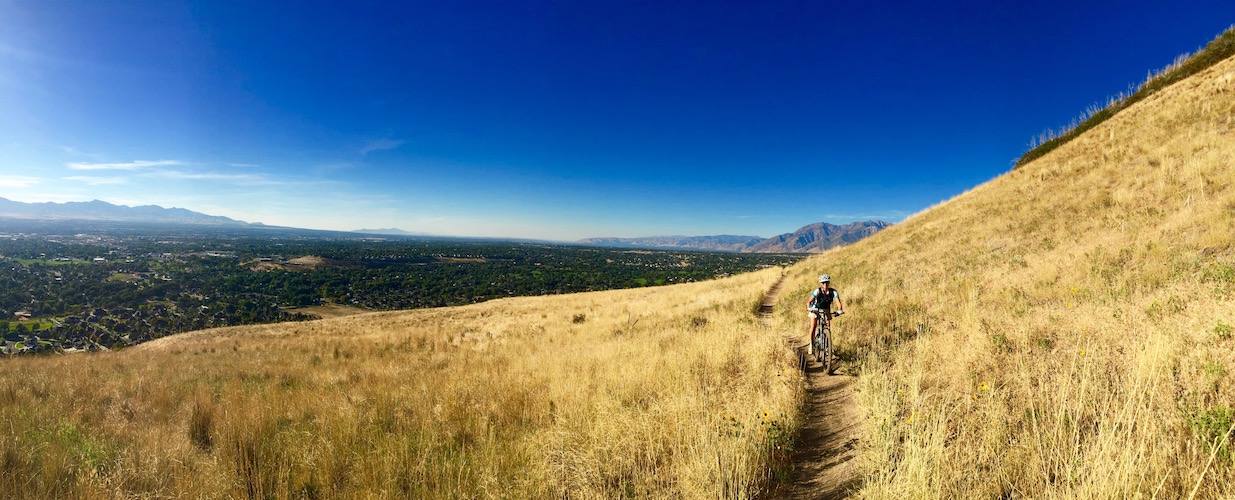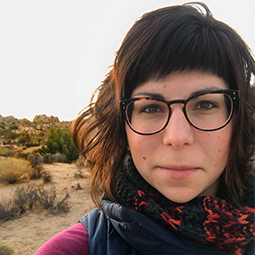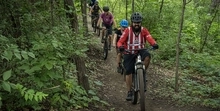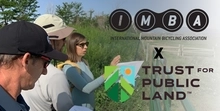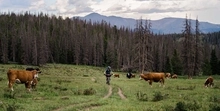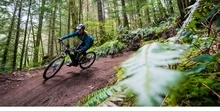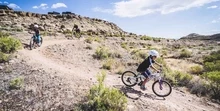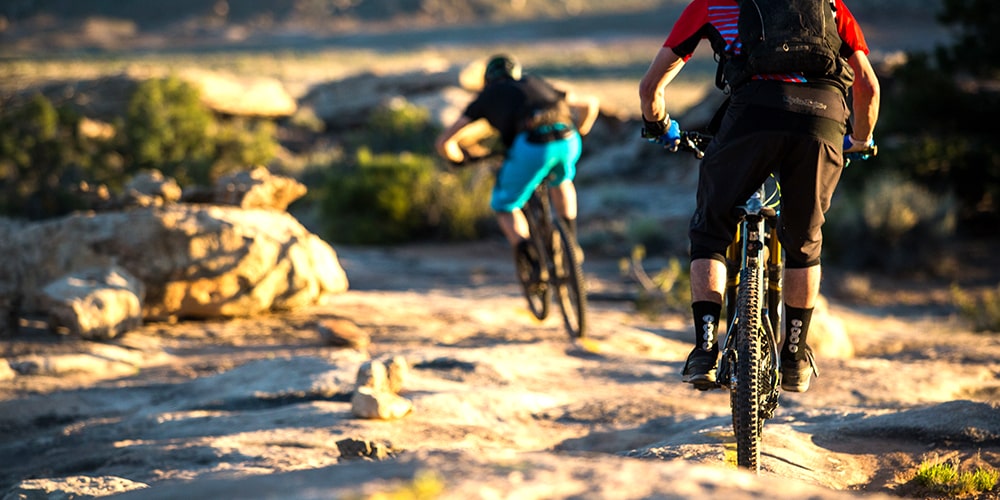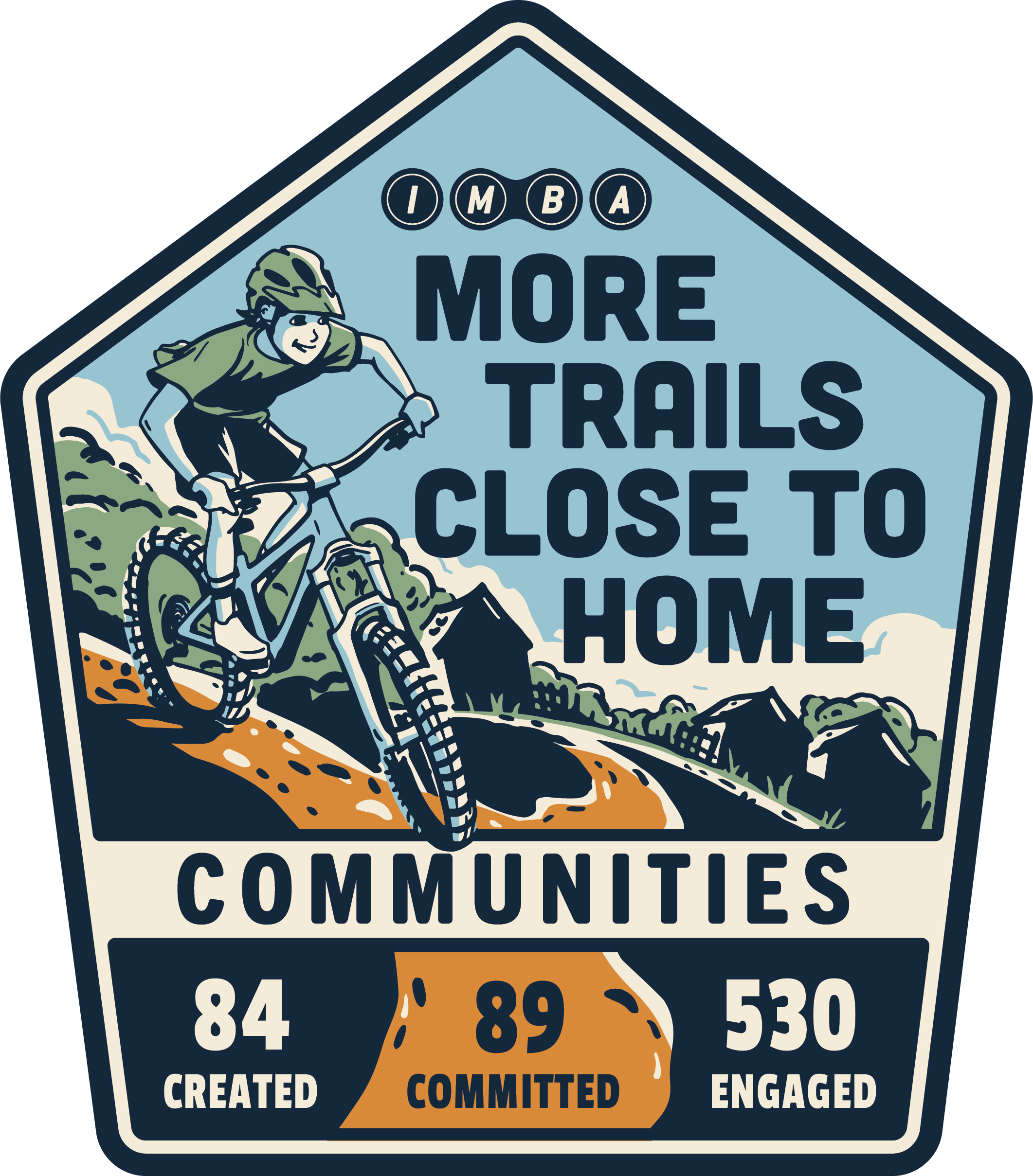Your Dedication Makes Trails Happen
Two and a half years. That’s how long it took for the Bonneville Shoreline Trail Advancement Act to move through Congress and be passed into law. In legislative terms, that’s lightning speed.
Behind the ferocious pace was a strong foundation three decades in the making: ongoing advocacy, powerful partnerships, and most of all, a clear vision for a 280-mile trail that could traverse six Utah counties in the Salt Lake Valley, home to 75% of the state’s residents.
So when it came time to pursue federal legislation to improve connectivity for the Bonneville Shoreline Trail, all the pieces were in place to tee up such a successful legislative effort.
How did IMBA and Utah advocates prepare for and pursue this opportunity? How did a bill for mountain bikers move so quickly? And is this process applicable to your community? Let’s find out.
A Quick Back-Pedal.
If you’re new to the tale of the Bonneville Shoreline Trail Advancement Act (BSTAA), let’s hit the highlights. The Bonneville Shoreline Trail furthers the long-distance dream for Utah’s famed Bonneville Shoreline Trail, while increasing opportunities for more trails close to home along Utah’s growing Wasatch Front. Better connections along the trail would give locals and regional enthusiasts alike more places to ride.
The challenge? The trail traverses the shores of ancient Lake Bonneville, which now crosses various land management boundaries, from federal Forest Service land to local access points and county parks. Small sections of the trail plan passed through Congressionally designated Wilderness. Wilderness does not allow motorized or mechanized equipment, which includes mountain bikes as well as certain trail building and trail maintenance tools like chainsaws and wheelbarrows. This land designation prevented the vision for a fully shared-used trail. While Wilderness protections are intended to honor and protect America’s most pristine, remote and revered wild spaces, these sections of trail are not what would generally be considered Wilderness. As the Salt Lake Valley’s population grew, neighborhood developments and backyards began to abut these Wilderness areas.
The BSTAA identified and released 326 acres of Wilderness divided over more than 20 of these locations to accommodate trail connections and sustainable trail development near population centers. The bill designated 326 acres of contiguous new wilderness in Mill Creek Canyon to ensure land area for wilderness remained the same. The bill passed into law in December 2022.
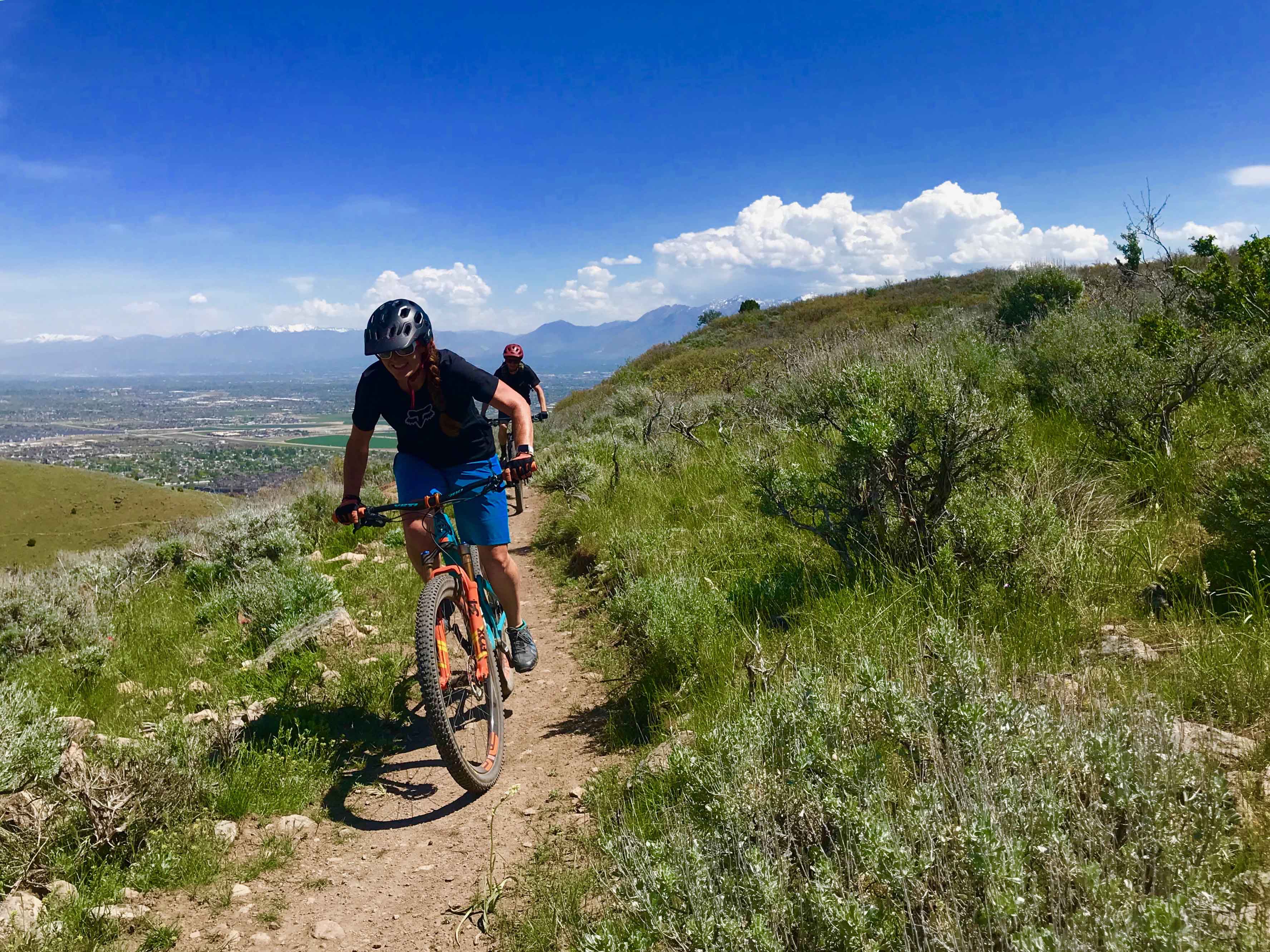
Local Leaders Play the Long-Game.
Passion, perseverance, and a whole lot of patience. The local and national advocates behind the Bonneville Shoreline Trail know these commitments well.
Like many mountain bike trails, the concept of the Bonneville Shoreline Trail came about as a response to a need in the community. In the 1980s, a group of outdoor recreationists wanted to preserve a mountain biking and pedestrian pathway that connected Emigration Canyon and Dry Canyon.
“Part of it was just the desire to have a great trail. Part of it was also to draw a line across the hillside between the urban and wildland interface to prevent residential creep up the hillside forever. The trail was a reason for the municipalities of Salt Lake City to purchase some of those lands and protect them in perpetuity for recreation,” said John Knoblock, chair of the Bonneville Shoreline Trail Committee.
One of the efforts that really helped attract more attention and resources was the trail’s designation as a Millennium Legacy Trail in 1999. This designation allowed the Bonneville Shoreline Trail to be recognized by the federal government, to be included in recreation plans, and to receive more funding.
“They really had some foresight in getting the trail recognized as a Millennium Trail. There are only two trails in the state that are recognized at a national level, and the Bonneville Shoreline Trail is one of them. So all of the municipalities and counties that touch on the Bonneville Shoreline Trail have the trail in all of their recreation plans,” explained Sarah Bennett, Executive Director of Trails Utah.
The designation also made the Bonneville Shoreline Trail a priority for surrounding communities.
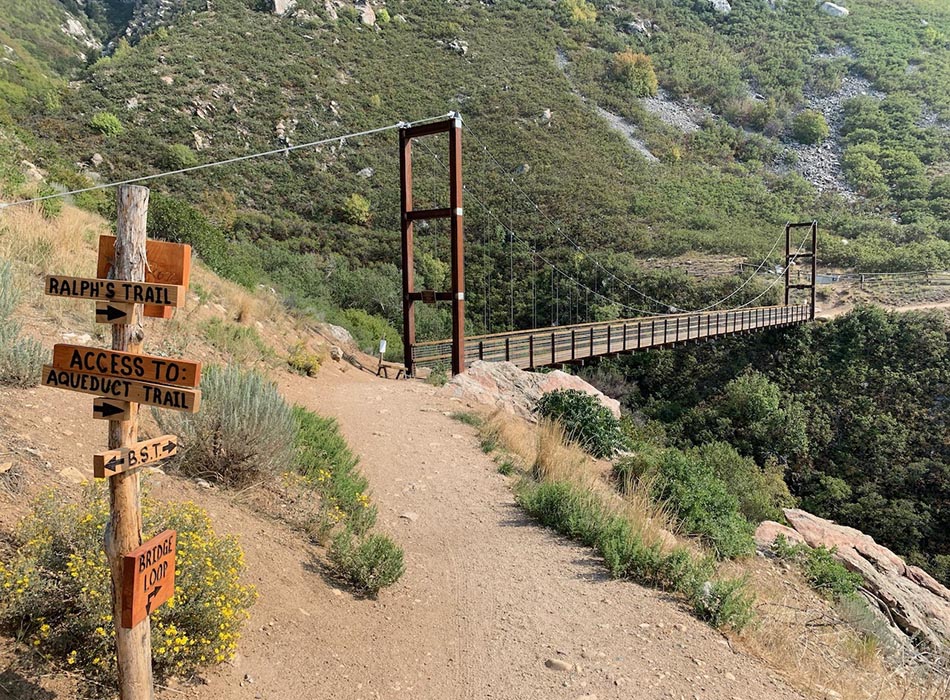
Planning and Partnerships.
It takes an average of three years from the time a section of trail is envisioned to when an entity can break ground. With that, daily planning and coordination helped keep the vision for the Bonneville Shoreline Trail moving forward. To-date, 100 miles of the trail have been built.
“One of the pieces that has helped along the way is there's a number of organizations up and down the alignment of the Bonneville Shoreline Trail. So there's not only the governmental agencies, counties, and cities that have helped push along the trail, but also non-profits. They have all helped to keep the momentum going,” said Knoblock.
“One of the greatest things about the Bonneville Shoreline Trail is that it was a major catalyst for trails and linking communities all along the Wasatch Front. It has lit a fire all along the whole range,” said Joey Klein, IMBA Trail Specialist. In the past three decades, Klein has partnered with communities and organizations along the trail on efforts ranging from volunteer trail building with mountain bikers, hikers and horsemen; to professional trail planning and design with recreation managers and government representatives.
Adding to ongoing planning efforts, Trust for Public Land has worked with local Utah communities and trails organizations since 2000 to acquire key parcels of land to fill in gaps in the proposed Bonneville Shoreline Trail corridor. To date, Trust for Public Land has acquired and transferred 25 parcels of land along the trail corridor into public ownership, representing 2,000 acres of new public land.
Bennett also stressed the importance of building trust with the people you work with.
“We've been at it so long that we developed the relationships at the city and county level, at the forest service. We're on a first name basis with most of those people. Over the years, it ripened into a relationship that has really allowed us to write grants, go after funding, get plans together that everybody is on board with,” Bennett said.
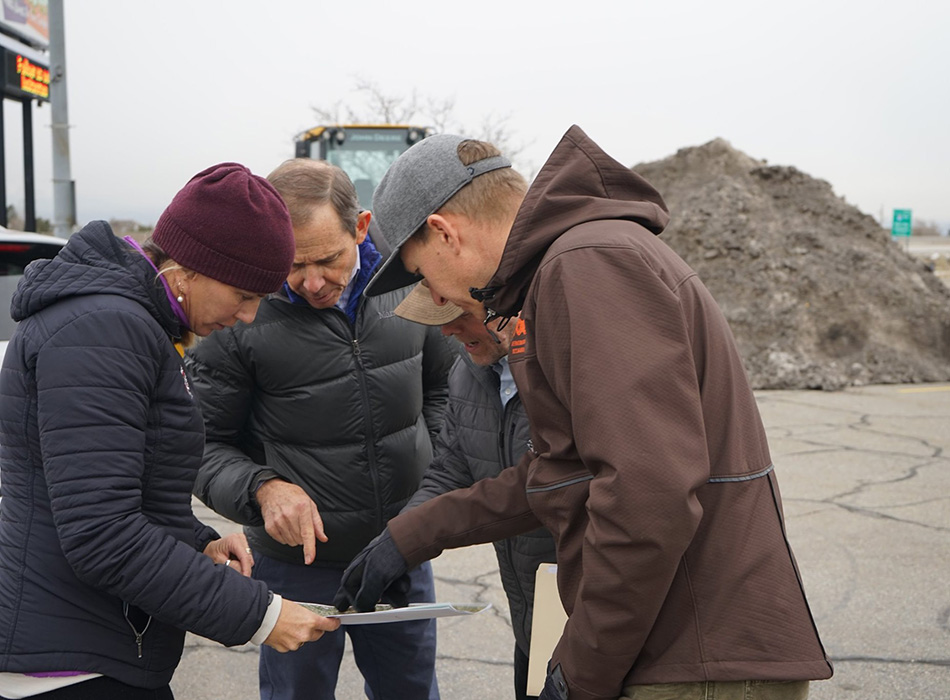
Land & Legislation: How a Bill Becomes a Law.
It’s a long, long wait while it’s sitting in committee.
IMBA’s Government Affairs team led the effort to pursue and prepare legislation that improves connectivity for the Bonneville Shoreline Trail, working closely with Representative John Curtis (R-UT), Senator Mitt Romney (R-UT), the Bonneville Shoreline Trail Committee, Trails Utah, Trust for Public Land, and many local government officials to advocate for the bill.
“In 2014, IMBA was working closely with Congressman Curtis’ office on an omnibus package that was included in the Utah public lands package, and I was on the phone with Curtis regularly to vet mountain bike aspects in the legislation. When we were finished with all the things related to the package, one of Curtis’ staffers asked, ‘Is there anything else we can do for you for mountain biking? We really like working with you.’ And that is how we got started on the Bonneville Shoreline Trail,” shared Aaron Clark, IMBA’s policy manager.
With the bill introduced in Washington in July 2020, grassroots work in Utah took hold while IMBA's Government Affairs team pursued the process in D.C. IMBA and key partners collected dozens of letters of support from local elected officials in the six counties that share the Bonneville Shoreline Trail, as well as support from local businesses and Utah-based outdoor companies who see the value in close-to-home recreation. IMBA held regular meetings with elected officials and their staffs both in D.C. while advocates did the same in Utah, both building support for the bill to keep the pressure on.
Originally the bill was included in public lands packages and paired with other land protections legislation, but ultimately it saw the swiftest movement when it became stand-alone legislation. IMBA's close partnerships to monitor legislative trends and pivot on a plan helped navigate this choice. Committing to a new Wilderness area was a key component of the bill’s success, by highlighting the shared value of protecting wild places and demonstrating how recreation aids and complements conservation.
The bill’s passage is tremendous for outdoor recreation advocates. It sets an encouraging precedent for communities eager for trails that need to pursue legislation to gain land access.
Clark added, “For other trail communities around the country that want to do the same thing, I would tell them to keep building relationships, even when you think you don’t need them.”
While timelines vary, communities often have similar paths with successful advocacy: working locally, building partnerships, and growing funding. These elements are covered in IMBA’s three-part advocacy series that shares tools for working locally alongside success stories from partnership work in Santa Fe, NM and historic funding efforts in Virginia.
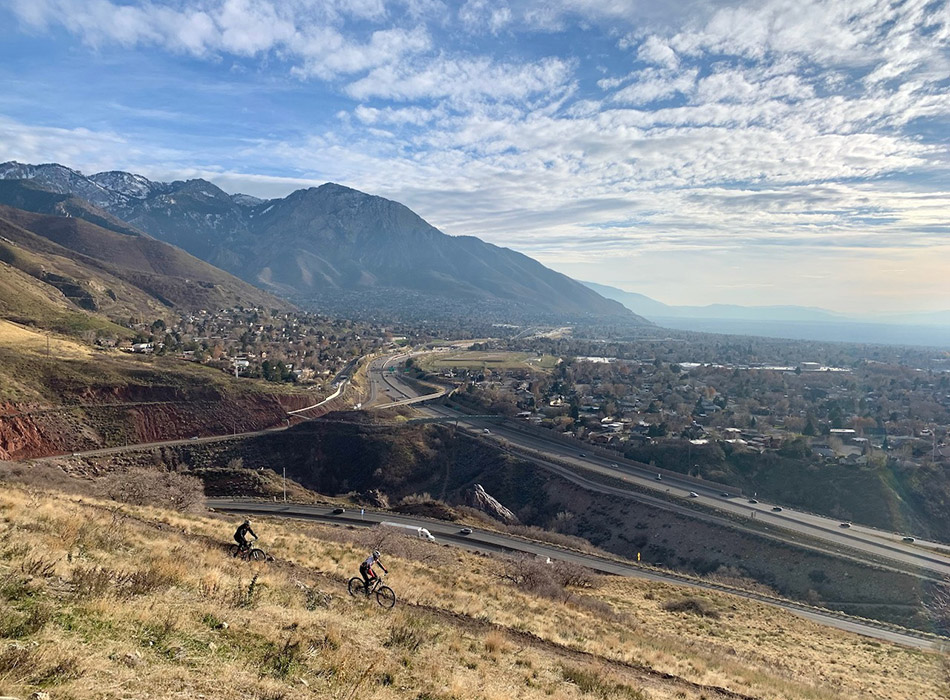
A New Law. Now What?
This new law isn’t the finish line. Passing legislation to improve connectivity is a crucial component to completion, but only the midpoint in this 280-mile trail’s journey. Now, communities across the Salt Lake Valley must work together to construct the full trail. Here from local leaders on what the trail could mean for communities in Utah, and how you can help:
Get Involved: Volunteer, Advocate, Donate
In January 2022, prior to the BSTAA’s December 2022 passage, IMBA penned a three-part series on the journey of the Bonneville Shoreline Trail. Read more about history and relationships, about trail champions and progress, and about legislative and land acquisition efforts that have all played a role in this impressive work.
